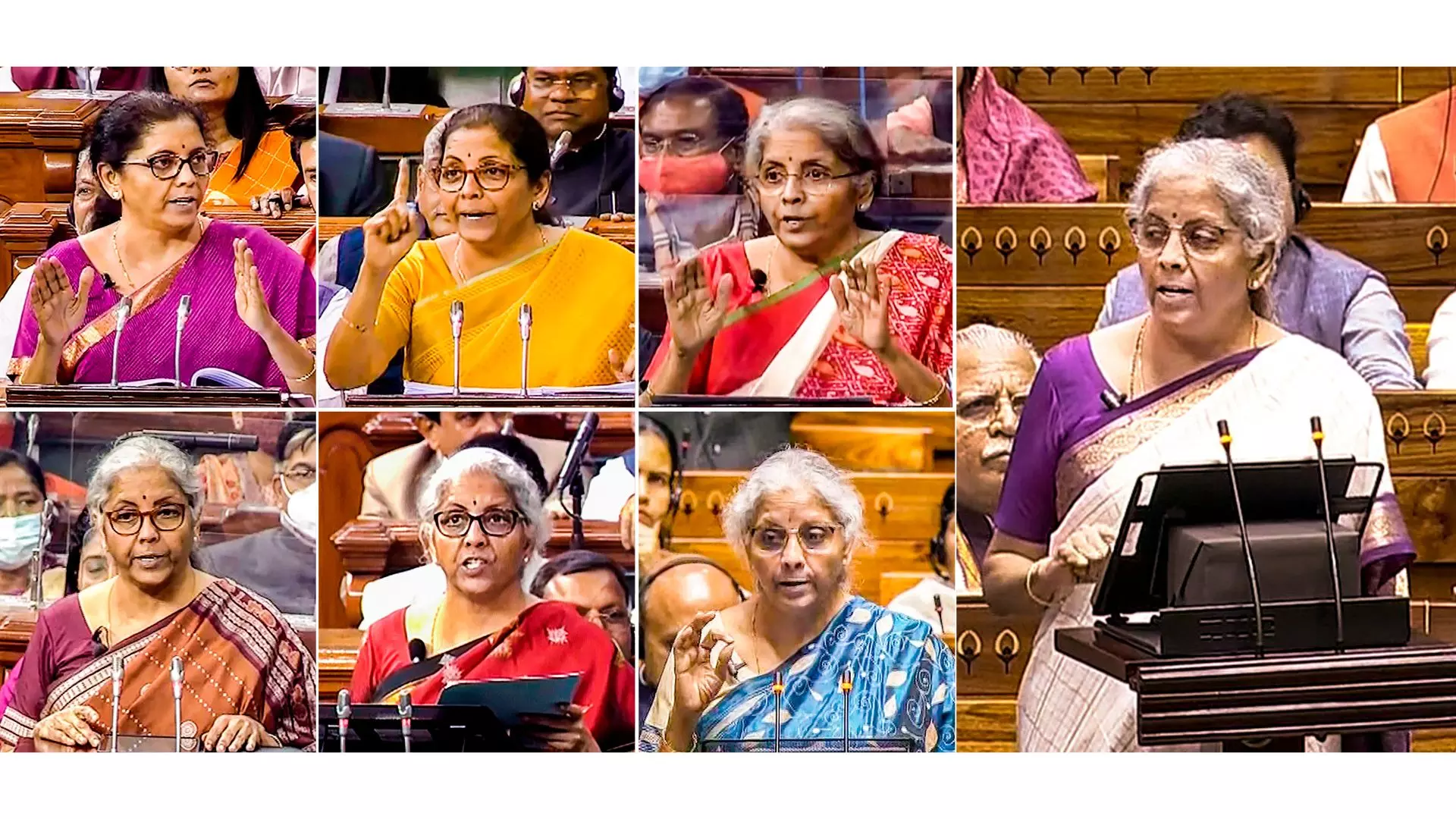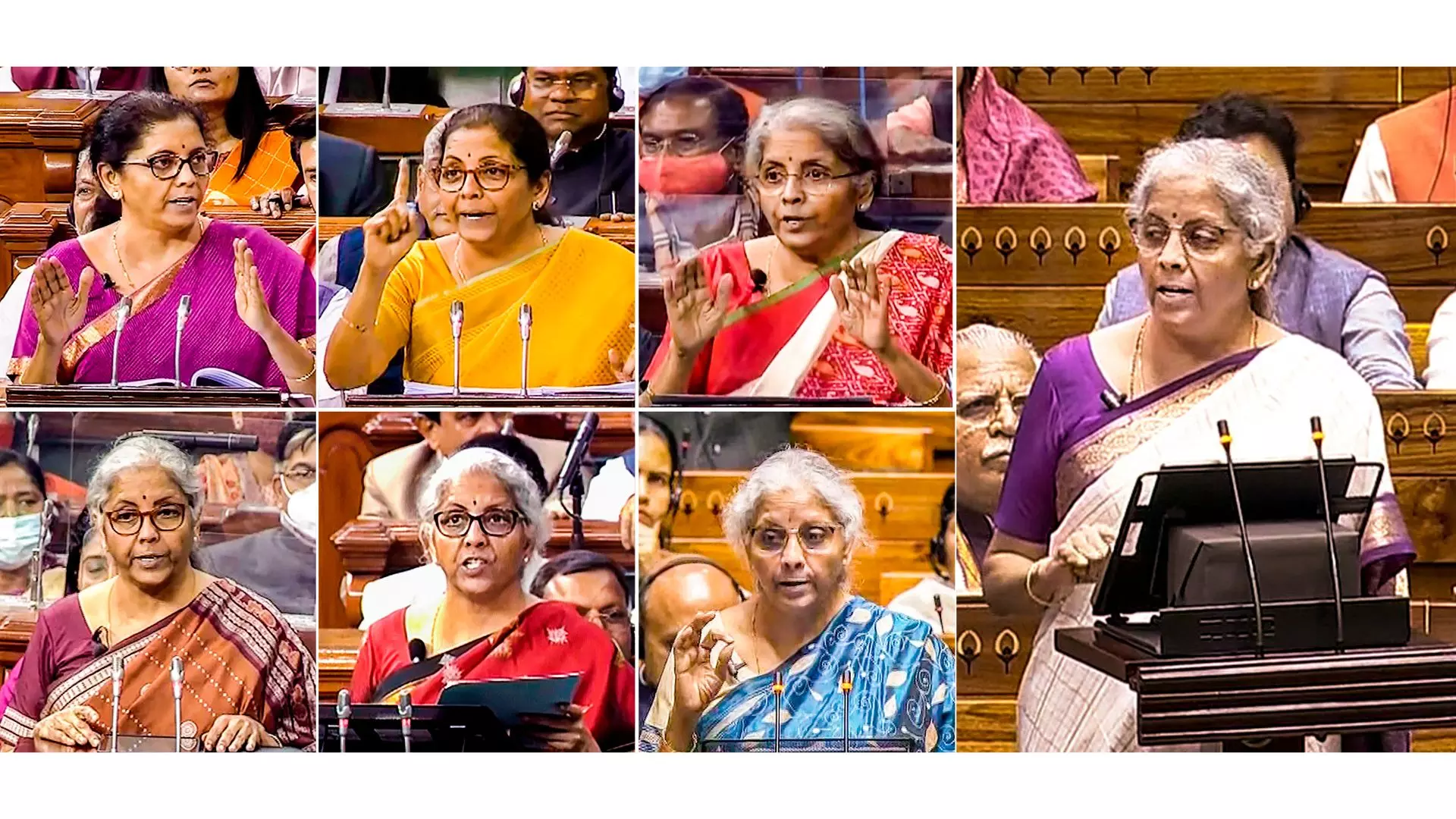
One of the commendable commitments of the Narendra Modi administration has been to fiscal rectitude despite its penchant to curate expansive benefits for identifiable groups of the voting public. Finance minister Nirmala Sitharaman has carried through this commitment in her outlays in fiscal 2024-25.
The fiscal deficit (FD), the prime metric of fiscal responsibility, is to be reduced from the estimated 5.1 per cent in the Interim Budget February 2024 to 4.9 per cent despite marginally increasing the outlay for capital expenditure by the Union government and
transfer of capital grants to state governments from Rs 14.96 trillion in the Interim Budget to Rs 15.02 trillion in the final Budget.
The FM also reiterated her commitment to bring the FD below 4.5 per cent of GDP by 2025-26 and thereafter to align the FD with continuous decline to normative levels of India’s bloated debt. By making this ambiguous statement, instead of saying outright by when Union debt would revert to the normative FD of three per cent, the FM seems to be buying flexibility in charting the fiscal stability path ahead.
She can afford to be blasé about returning to normalcy, without roiling the bond markets, because India is now the fastest growing large economy. There are so few good stories out there, that investors both domestic and foreign would be loath to be rigidly prescriptive with India. The nominal GDP growth assumption for the Budget of 10.5 per cent fits neatly into the projected growth (minimum level) of 6.5 per cent projected by the Economic Survey released a day earlier –decidedly less bullish than the RBI estimate of 7.2 per cent for real growth in 2024-25 and more in line with the IMF estimate in its June 2024 update.
There is also good news on rationalizing the strategy of import protection as a fillip for domestic manufacturing. Recognising that mobile phone manufacture is now a “mature” industry in India, import duty on imported mobiles and components will reduce to 15 per cent to incentivise domestic manufacturers to become competitive.
Similarly, much-needed chink holes have been opened in the “Atma Nirbhar” dogma. Rare minerals, not available in India and imported for use in batteries, nuclear power, renewable power, and defence-space applications, will be exempted from import duty or the basic customs duty will be reduced. This opens the door for value addition in India from their processing and refining. Significantly, the FM also slashed the corporate tax rate for foreign companies from 45 to 35 per cent, leaving a 10-percentage point differential between their tax rate and that for domestic corporates. Encouraging foreign companies to import rare minerals duty-free, process and refine them in India is a savvy move to leave value on the table for the owners of such global assets, who might wish to buy, long term, into India’s growth story.
A concrete step to enhance the ease of business is in the right direction. By abolishing the “Angel Tax”, the FM has widened the catchment area for funding of Indian start-ups. After its introduction in the waning years of Congress rule in 2012, this was a classic “big state” regulation which allowed the government to determine the fair price at which an unlisted Indian start-up could sell its stake to an Indian investor.
Prior to liberalization in 1991, the government even decided the price at which companies could list their shares in the market to avoid overvaluation and duping of the public. In the case of start-ups, the intention might have been to close this route to avoid tax by legitimising undeclared financial resources. Notionally, black money can be laundered by creating a zombie start-up and selling it to an associate at fabulous valuations with the associate booking fabulous losses subsequently, to set-off her own capital gains elsewhere.
The tax authorities have more direct means of assessing and taxing income where tax evasion is happening in the first place, and case-by-case review of business investment decisions like the valuation of shares bought or sold, could kill the goose that lays the golden egg by stifling the fast-moving and nimble ethos of start-up financing.
On the expenditure side, the well-known template of targeted allocations for the poor, youth, women and farmers continues apace. Across sectors there are nine priority areas. An innovation is being implemented in the employment generation area. The intention is to benefit 21 million first-time workers in the formal sector by marginally reducing their cost to the company and thereby, hopefully enhancing the demand for new employees. First-time employees drawing a salary up to Rs 1 lakh a month will get Rs 5,000 for three months. That is 1.25 per cent of the annual salary. Assuming an average salary of Rs 3 lakhs per year, the government allocation comes to just five per cent of the annual pay. This is unlikely to induce a formal sector industry to employ more people.
Overall, the Budget gets full marks for its continued commitment to fiscal consolidation whilst also recognising the need to continue with extended welfare outreach to marginalized areas. Where it falls woefully short is on laying on the table a coherent long-plan to contain inflation — particularly food (beyond cereals and a limited volume of lentils which are distributed free to 800 needy million Indians), which comprises a major segment of the consumption basket of the poor. Also missing is the vision for enhancing productivity in the agriculture sector where land fragmentation, poor irrigation facilities and the lack of options for storage, transportation and sale are key issues affecting at least 80 per cent of the 80 million farming families being subsidized through direct benefits transfers.
